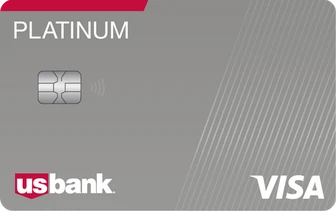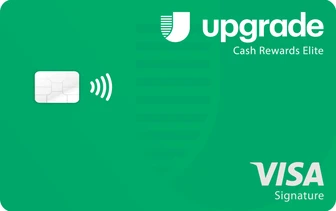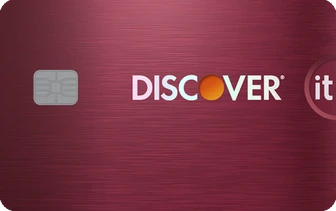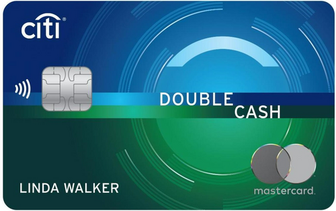Why you can trust Credit Card
More Info
On this page

BEST FOR CUSTOMIZABLE REWARDS
U.S. Bank Cash+® Visa Signature® Card

Reward rate
5
5% cash back on your first $2,000 in eligible net purchases each quarter on the combined two categories you choose.
3
5% cash back on prepaid air, hotel and car reservations booked directly in the Rewards Travel Center.
-1
1% cash back on all other eligible purchases.
1
1% cash back on all other eligible purchases.
Intro offer
$200 bonus
Annual fee
$0
Regular APR
16.74% - 26.74% (Variable)
Recommended credit
Good to Excellent (670 - 850)
Pros
- Multiple rotating and fixed bonus categories, which can make it easier to earn rewards quickly
- The $200 sign-up bonus (after spending $1,000 within the first 120 days of account opening) increases the card’s first-year value
Cons
- The $2,000 combined spending cap each quarter for your chosen 5% categories limits your ability to rake in rewards
- Having to track and enroll in rotating categories can be a hassle for some
- New! $200 bonus after spending $1,000 in eligible purchases within the first 120 days of account opening.
- 5% cash back on your first $2,000 in combined eligible purchases each quarter on two categories you choose
- 5% cash back on prepaid air, hotel and car reservations booked directly in the Rewards Travel Center
- 2% cash back on one everyday category, like Gas Stations/EV Charging Stations, Grocery Stores or Restaurants
- 1% cash back on all other eligible purchases
- 0% Intro APR on purchases and balance transfers for the first 15 billing cycles. After that, a variable APR currently 16.74% – 26.74%
- No Annual Fee
- Pay over time by splitting eligible purchases of $100+ into equal monthly payments with U.S. Bank ExtendPay™ Plan.
- Terms and conditions apply.
ADDITIONAL FEATURES
Purchase intro APR
0% Intro APR on purchases for the first 15 billing cycles.
Balance transfer intro APR
0% Intro APR on balance transfers for the first 15 billing cycles.

BEST FOR PERSONAL LOAN ALTERNATIVE
Upgrade Cash Rewards Elite Visa®

Reward rate
2.2
Earn 2.2% unlimited cash back on card purchases every time you make a payment
Intro offer
$200
Annual fee
$0
Regular APR
8.99% - 29.99% (Variable)
Recommended credit
Good to Excellent (670 - 850)
Pros
- You won’t need to use your reward earnings to offset any maintenance fees.
- You’ll earn a bonus after you open a Rewards Checking account and make three purchases with the card in your first 60 days.
Cons
- The high end APR range is well above average. That could prove costly if you don’t have the credit needed to qualify for the lower range and you end up carrying a balance.
- You won’t get a break on interest if you carry a balance since there are no intro APR offers on purchases or balance transfers.
- $200 bonus on your Upgrade Card after opening a Rewards Checking account and making 3 debit card transactions within 60 days.*
- New Feature: Pay your balance in full early each month and avoid interest with EarlyPay.
- Earn 2.2% unlimited cash back on card purchases every time you make a payment
- See if you qualify in seconds with no impact to your credit score
- No Fees – $0 annual fees, $0 activation fees, $0 maintenance fees
- Combine the flexibility of a card with the low cost and predictability of a loan
- Access to a virtual card, so you can start earning while you wait for your card to arrive in the mail.
- Contactless payments with Apple Pay® and Google Pay™
- Mobile app to access your account anytime, anywhere
- Enjoy peace of mind with $0 Fraud liability
- *To qualify for the $200 welcome bonus, you must open and fund a new Upgrade Rewards Checking Account and make 3 debit card transactions within 60 days of your Upgrade Card account opening. The bonus credit will be posted to your Upgrade Card as a rewards credit within 1-2 billing periods following the third debit transaction on your Rewards Checking account. Your Upgrade Card must be in good standing to receive the bonus.
ADDITIONAL FEATURES
Purchase intro APR
N/A
Balance transfer intro APR
N/A

BEST FOR GAS
Blue Cash Everyday® Card from American Express

Reward rate
3
3% Cash Back at U.S. supermarkets on up to $6,000 per year in purchases, then 1%.
1
New! 3% Cash Back on U.S. online retail purchases, on up to $6,000 per year, then 1%.
-1
1% Cash Back on other purchases.
1
1% Cash Back on other purchases.
Intro offer
$200
Annual fee
$0
Regular APR
16.24%-27.24% Variable
Recommended credit
Good to Excellent (670 - 850)
Pros
- It carries one of the best combined cash back rates available at no annual fee at U.S. gas stations and U.S. supermarkets. Those two categories make up a big chunk of the average person’s budget.
- You can earn $7 back per month on The Disney Bundle streaming package, which includes Disney+, Hulu, and ESPN+ (each month you spend $13.99 or more on an eligible subscription, terms apply). To earn that much back in a month via the card’s 3 percent categories, you’d typically need to spend over $230.
Cons
- You’ll only earn 3 percent cash back on your first $6,000 in annual spending in each of the card’s bonus categories (then 1 percent). While that’s a high limit, it could hold you back if you’re sharing an account across multiple households.
- The card carries a 2.7 percent foreign transaction fee, so it’s not a good option if you’re looking for a single rewards card you can use at home and abroad.
- Earn a $200 statement credit after you spend $2,000 in purchases on your new Card within the first 6 months.
- No Annual Fee.
- Balance Transfer is back! Enjoy 0% intro APR on purchases and balance transfers for 15 months from the date of account opening. After that, 16.24% to 27.24% variable APR.
- 3% Cash Back at U.S. supermarkets on up to $6,000 per year in purchases, then 1%.
- New! 3% Cash Back on U.S. online retail purchases, on up to $6,000 per year, then 1%.
- 3% Cash Back at U.S. gas stations, on up to $6,000 per year, then 1%.
- Get $7 back each month after using your Blue Cash Everyday® Card to spend $13.99 or more each month on an eligible subscription to The Disney Bundle, which includes Disney+, Hulu, and ESPN+. Enrollment required.
- Terms Apply.
ADDITIONAL FEATURES
Purchase intro APR
0% on purchases for 15 months
Balance transfer intro APR
0% on balance transfers for 15 months

BEST FOR GROCERIES
Blue Cash Preferred® Card from American Express

Reward rate
6
6% Cash Back at U.S. supermarkets on up to $6,000 per year in purchases (then 1%).
1
6% Cash Back on select U.S. streaming subscriptions.
3
3% Cash Back at U.S. gas stations
0
3% Cash Back at U.S. gas stations
1
1% Cash Back on other purchases
Intro offer
$350
Annual fee
$95
Regular APR
16.24%-26.24% Variable
Recommended credit
Good to Excellent (670 - 850)
Pros
- The base reward program is uber-lucrative, making this card a good choice for people looking for long-term value.
- You don’t have to keep track of rotating spending categories or enrollment deadlines.
Cons
- There is no intro APR offer on balance transfers.
- You won’t earn the extra rewards for grocery shopping at major superstores and wholesale clubs, as those don’t count as U.S. supermarkets.
- Earn a $350 statement credit after you spend $3,000 in purchases on your new Card within the first 6 months.
- Buy Now, Pay Later: Enjoy $0 intro plan fees when you use Plan It® to split up large purchases into monthly installments. Pay $0 plan fees on plans created during the first 12 months after account opening. Plans created after that will have a fixed monthly plan fee up to 1.33% of each purchase amount moved into a plan based on the plan duration, the APR that would otherwise apply to the purchase, and other factors.
- Low intro APR: 0% intro APR for 12 months on purchases from the date of account opening, then a variable rate, 16.24% to 26.24%.
- 6% Cash Back at U.S. supermarkets on up to $6,000 per year in purchases (then 1%).
- 6% Cash Back on select U.S. streaming subscriptions.
- 3% Cash Back at U.S. gas stations and on transit (including taxis/rideshare, parking, tolls, trains, buses and more).
- 1% Cash Back on other purchases.
- Cash Back is received in the form of Reward Dollars that can be redeemed as a statement credit.
- $95 Annual Fee.
- Terms Apply.
ADDITIONAL FEATURES
Purchase intro APR
0% on purchases for 12 months
Balance transfer intro APR
N/A

BEST FOR ROTATING CASH BACK CATEGORIES
Discover it® Cash Back

Reward rate
5
Earn 5% cash back on everyday purchases at different places each quarter like Amazon.com, grocery stores, restaurants, gas stations and when you pay using PayPal, up to the quarterly maximum when you activate.
1
Plus, earn unlimited 1% cash back on all other purchases – automatically.
Intro offer
Cashback Match™
Annual fee
$0
Regular APR
13.49% - 24.49% Variable
Recommended credit
Good to Excellent (670 - 850)
Pros
- Discover will match the cash back you earn at the end of the first year.
- There are a few cash back redemption options, including credit to your account and donations.
Cons
- You must enroll to take advantage of the bonus categories each quarter.
- There is a spending limit on your highest cash back category each quarter ($1,500 in combined purchases per quarter).
- Intro Offer: Unlimited Cashback Match – only from Discover. Discover will automatically match all the cash back you’ve earned at the end of your first year! There’s no minimum spending or maximum rewards. You could turn $150 cash back into $300.
- Earn 5% cash back on everyday purchases at different places each quarter like Amazon.com, grocery stores, restaurants, gas stations and when you pay using PayPal, up to the quarterly maximum when you activate. Plus, earn unlimited 1% cash back on all other purchases – automatically.
- New! Discover helps remove your personal information from select people-search websites. Activate by mobile app for free.
- Every $1 you earn in cash back is $1 you can redeem.
- New Intro APR: Get a 0% intro APR for 15 months on purchases. Then 13.49% to 24.49% Standard Variable Purchase APR applies, based on credit worthiness.
- No annual fee.
ADDITIONAL FEATURES
Purchase intro APR
0% for 15 months
Balance transfer intro APR
0% for 15 months

BEST FOR UP TO 2% CASH BACK
Citi® Double Cash Card

Reward rate
2
Earn 2% on every purchase with unlimited 1% cash back when you buy, plus an additional 1% as you pay for those purchases.
Intro offer
$200 Cash Back
Annual fee
$0
Regular APR
16.24% - 26.24% (Variable)
Recommended credit
Good to Excellent (670 - 850)
Pros
- You can convert your cash back earnings to Citi ThankYou points when paired with a card like the Citi Premier® Card, which can be redeemed for travel, gift cards and more.
- There are no spending category restrictions or rotating categories
Cons
- Your rewards can expire with this card if you don’t use it for a year.
- The sign-up bonus spending requirement is higher than you’ll find on many no-annual-fee cash back cards.
- Earn 2% on every purchase with unlimited 1% cash back when you buy, plus an additional 1% as you pay for those purchases.
- For a limited time, earn $200 cash back after spending $1,500 on purchases in the first 6 months of account opening.
- Balance Transfer Only Offer: 0% intro APR on Balance Transfers for 18 months. After that, the variable APR will be 16.24% – 26.24%, based on your creditworthiness.
- Balance Transfers do not earn cash back. Intro APR does not apply to purchases.
- If you transfer a balance, interest will be charged on your purchases unless you pay your entire balance (including balance transfers) by the due date each month.
- There is an intro balance transfer fee of 3% of each transfer (minimum $5) completed within the first 4 months of account opening. After that, your fee will be 5% of each transfer (minimum $5).
ADDITIONAL FEATURES
Purchase intro APR
N/A
Balance transfer intro APR
0% intro for 18 months on Balance Transfers
A closer look at our best airline credit cards
Capital One Venture Rewards Credit Card: Best for flexible travel rewards
- What we love about the Venture Rewards card: Capital One makes it easy for travelers to earn both a high rewards rate on hotels and rental cars booked through Capital One Travel and a generous flat rate of 2X miles on all other purchases. Plus, the ability to redeem miles for statement credits toward travel purchases made within the past 90 days adds a unique dimension of flexibility compared to other flat-rate cards.
- Who this card is good for: Travelers who want the freedom to earn boosted miles on any eligible purchase and transfer miles to different travel partners without being tied to a single airline or hotel chain (there are more than 15 Capital One transfer partners).
- Alternatives: The Chase Sapphire Preferred® Card could provide better value. Points are worth 1.25 cents when booking travel through the Chase Ultimate Rewards portal—25 percent more than the value of the Venture Rewards mile.
Delta SkyMiles Platinum American Express Card: Best for Delta Air Lines perks
- What we love about the Delta SkyMiles Platinum card: A generous welcome offer and the annual domestic companion certificate each year after renewing your card make it easy to quickly offset the $250 annual fee. Cardholders still have plenty of other features to take advantage of, including free first checked bag on Delta flights, priority boarding on Delta flights, in-flight savings and lots of travel and shopping protections.
- Who this card is good for: Regular Delta flyers looking to save on airfare and other travel costs can squeeze plenty of value out of the SkyMiles Platinum card and its loyalty status opportunities.
- Alternatives: If you don’t mind flying with airlines other than Delta, the American Express Gold Card is worth a look thanks to its supersized rewards earning potential and dining credits that may help compensate for its lack of Delta-specific perks. The Gold Card’s rewards program offers greater flexibility in how you can redeem points (you can even transfer them to Delta) and more everyday opportunities to earn rewards, including at U.S. supermarkets and restaurants.
Delta SkyMiles Reserve American Express Card: Best for Delta Medallion members
- What we love about the SkyMiles Reserve card: Delta packs in plenty of premier features that justify the steep $550 annual fee. Fans of complimentary access to Delta Sky Clubs and annual companion certificates should have no trouble offsetting that annual fee.
- Who this card is good for: Loyal Delta flyers looking to travel in comfort and style.
- Alternatives: The Capital One Venture X has a lower annual fee ($395) and more chances to earn unlimited miles on everyday spending. Those miles can then be transferred to a number of hotel and airline partners.
What is an airline credit card?
You can use airline credit cards just like a more general rewards credit card, but that may not be the best strategy for maximizing rewards. Airline cards provide the most value when used strategically with other cards and are especially useful for the travel-specific perks they offer, such as priority boarding, seating upgrades and companion fares. Owning an airline credit card while being a member of the airline’s frequent flyer program can also help you get maximum value.
How do airline credit cards work?
Airline credit cards work just like regular credit cards—there are defined credit limits and interest rates that apply to your purchases. However, with airline credit cards, you earn travel rewards specific to an airline and can participate in that airline’s rewards program.
For example, Delta SkyMiles cards earn miles redeemable only for Delta flights, while Southwest Priority Rewards card rewards are used for Southwest airfare.
Most airline cards have higher rewards rates for purchases made directly with the airline, but that doesn’t mean they can’t be used elsewhere. Many cards earn miles on everyday purchases, including groceries, gas, dining and other categories.
You might even think of an airline credit card as sort of a VIP airport pass. The best airline rewards cards routinely include perks such as access to airport lounges, priority boarding, free checked bags and more.
Airline credit cards vs. travel credit cards
Both airline credit cards and travel credit cards typically reward you with points or miles. But there are a few key differences.
Airline credit cards are tied to a specific airline like American Airlines, Delta, Southwest or United. These co-branded credit cards reward your loyalty with exclusive perks you won’t find with general travel cards. These may include free checked bags, priority boarding, companion tickets and even accelerated elite status. Unfortunately, redemption options usually aren’t as flexible with airline credit cards, which can typically only be redeemed for plane tickets with that specific airline.
In contrast, travel credit cards are not tied to specific airlines. Although you won’t earn the exclusive perks, travel rewards cards are more versatile and let you earn and redeem in a variety of travel-related ways. This includes different airlines, hotels and car rentals. Depending on the travel credit card, you might also be able to redeem your points or miles for cash, gift cards and merchandise, though the value may not be as high as when you redeem for travel.
Who should get an airline credit card?
How to choose the right airline credit card
Do I have a preferred airline?
Do I care about perks?
What’s my credit like?
Does this card match my spending habits?
Creditcard's Insight
If you’re looking for an easy way to earn extra rewards with your airline credit card, look no further than your appetite. Several airlines, including Southwest, United and American, have dining programs that let you earn additional points at participating restaurants.
3 ways to maximize your airline miles’ value
Once you’ve accumulated thousands of airline miles, it’s time to redeem them for your next vacation or trip. When earning and using airline miles, here are some things to keep in mind to reap maximum value:
- Pair airline cards and travel cards. Let’s say you have the Chase Sapphire Preferred card and the Southwest Rapid Rewards Plus Credit Card. Because Southwest is a Chase travel partner, you can transfer your Ultimate Rewards points at a 1:1 ratio. This way, you can rack up points to use for Southwest flights between both cards, but you aren’t stuck redeeming with Southwest if you find a better award price for your Ultimate Rewards points elsewhere.
- Take full advantage of sign-up bonuses. A sign-up bonus or welcome offer from a new airline card could be worth several hundred dollars or more in travel costs. Keep track of your progress toward the spending requirement and start thinking about how you might use those bonus miles once you’ve earned them.
- Track blackout dates and off-peak times. Some airlines restrict when you can use miles to book flights during busy traveling periods. On the other hand, they also may heavily discount award flight costs during off-peak travel periods. Keep track of these fluctuations in cost to maximize the value of your miles.
Creditcard's Insight
With cards that offer airline companion passes, there’s a lot of variation in how you qualify. Requirements can include completing a number of flights within a certain time period, earning a specific amount of points or spending a required amount of money with your card. It’s another example of how it pays to read the terms and conditions.
Should I get an airline credit card in 2022?
Travel in 2022 may be increasing, but COVID-related trip cancellations and interruptions are still a distinct possibility. In that case, an airline card that carries travel insurance like trip cancellation/interruption protection could provide some peace of mind for whatever speedbumps may pop up.
Beyond safeguarding your travel plans, an airline card can help you save this summer for upcoming trips you have in store. Nabbing an airline card that rewards a variety of categories can help you fund your airfare by stockpiling rewards from daily purchases like coffee or gas.
Meanwhile, those purchases could contribute to qualifying for the airline’s loyalty status perks or your card’s welcome offer. In fact, one of the best reasons to apply for an airline card ahead of time is it to take advantage of its intro offer since a strong sign-up bonus can help pay for your vacation or flight.
A Bankrate survey earlier this year found that almost 70 percent of U.S. adults may be changing their summer travel plans due to account for inflation. Fortunately, finding the right airline card may help ease the cost thanks to its potential rewards, welcome offer, travel features and loyalty program perks.
How we chose our list of the best airline credit cards
Rewards
We evaluate each card's rewards program on its rewards rate (mile per $1 spent and inclusion of non-airline spending categories), as well as the ease of redemption.
Perks
We factor in additional benefits, such as priority boarding or free checked bags, that enhance the travel experience and increase the card's overall value.
Annual fee
We consider the annual cost of owning the card (if applicable) and determine whether the fee is justified by rewards, perks or sign-up bonuses.
